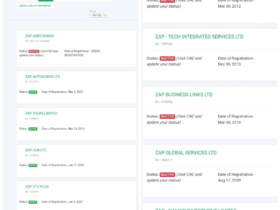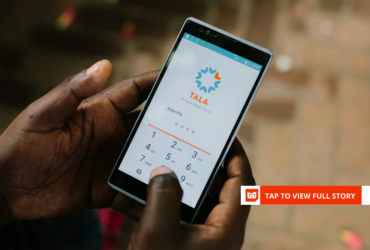On March 12, 2025, Mohammed Idris, Nigeria’s information minister published an opinion piece on Cointelegraph, a crypto-focused publication, where he sounded clearly that the country is taking a more receptive approach to blockchain technology.
“Nigeria sees blockchain technology as more than just crypto trading,” wrote Idris in that report. “Blockchain can be a powerful governance, transparency, and service delivery tool. Conversations are underway on how blockchain can improve public systems, such as land registries, identity management, and supply chain monitoring.”
While Nigeria has previously taken a shut-out stance toward cryptocurrency, it has always reacted differently to blockchain, the technology that enables crypto. In 2021, it launched the eNaira, Africa’s first Central Bank Digital Currency (CBDC), which failed to gain traction. In 2023, it approved a National Blockchain Policy in an attempt to integrate blockchain technology into various sectors of its economy. Through the National Information Technology Development Agency (NITDA), it has also provided scholarships to help talents build expertise in emerging technologies like blockchain.
Yet, the country’s greatest test will be to absorb the technology into its financial payments ecosystem. The opportunity lies in using blockchain to build a trusted infrastructure for digital transactions without losing oversight.
Regulated blockchains—also called permissioned blockchains—are digital ledgers with access controls that only allow approved participants to engage in the network. Unlike public blockchains that anyone can join, regulated blockchains are often managed by a consortium or central authority, making them more attractive to financial institutions and regulators.
They’re used in the European Union, Singapore, and the UAE for different purposes, including to facilitate transaction settlements, support digital identity management, register lands, and store health and judicial records.
There’s a push among local innovators for Nigerian regulators, banks, and other financial institutions (OFIs) to adopt regulated blockchain rails for faster, settlement fail-proof, and more transparent financial services.
At the heart of this innovation is Zone, a Nigerian company building a payments infrastructure with blockchain technology. The company has been one of the early movers exploring how regulated systems could work locally.
Since 2022, Zone has launched practical use cases for the technology to remodel traditional payment systems at automated teller machines (ATMs) and Point-of-Sale (POS) terminals. In 2024, it hit ₦1 trillion ($636 million) in transactions, showing adoption for its blockchain technology among the elite in Nigeria’s traditional financial ecosystem.
On March 26, it released a white paper explaining how it sees regulated blockchain being used in financial services across Africa. Zone CEO Obi Emetarom spoke to TechCabal about the company’s heuristics for bringing its technology to payments and where financial services are heading to in Nigeria.
This interview has been edited for length and clarity.
What gave you the conviction that Nigeria needs a regulated blockchain, and why is now the right time?
I don’t think about regulated blockchain technology as something that Nigeria particularly needs. It’s a globally applicable technology. Our scope of building one is not to restrict it to national utility.
That said, a regulated blockchain is a more efficient system compared to traditional finance systems. It follows the next logical step of evolution of financial service technology since the days we’ve gone from trade by barter, to commodities, fiat money, and now, digital forms of payment.
The timing is right because we have the technology needed to make this happen. Two major technologies underpin this evolution and are now widely available and improving. One is blockchain, which has been around for less than 20 years and continues to evolve.
The other is Artificial Intelligence. Both technologies have matured to the point where we can now conceptualise how they enable the next phase of evolution in financial services.
What makes a blockchain-based financial infrastructure a better long-term bet compared to the current traditional financial system? Specifically, what shortcomings in the current traditional finance (TradFi) system highlight the need for change?
There are three tenets to consider.
The first is the nature of financial assets. When we talk about assets, we mean money or any other financial asset. In the current system, assets are still physically represented. Paper money exists, and even digital transactions are ultimately backed by physical paper stored in vaults. Digital transactions today are just representations of physical assets.
The second is operations. Today, financial operations are still at least partially manual. Traditional financial institutions rely on human involvement, which introduces inefficiencies, delays, and costs.
The third is regulation. Currently, compliance is discretionary. Regulators write rules on paper, publish them, and hope operators comply. The only way to verify compliance is through periodic audits, which are expensive and ineffective. Audits do not guarantee continuous compliance, as companies can appear compliant during an audit while still engaging in non-compliant behaviour at other times. This creates a lack of transparency.
But introducing regulated blockchain to augment what we have now—which is what we’re going for at the moment—and you look at the benefits, there are lower costs, less friction, stronger compliance, and better liquidity. Plus, separating custody from innovation removes a major bottleneck, opening the door for more players to build financial services. We also believe that generative AI will accelerate this transformation by supporting humans in expanding the diversity of financial services in this new paradigm.
Zone is pioneering these talks for regulated blockchain in financial services. What pushbacks did you receive from regulators and financial institutions?
The white paper is something personal that I’ve written to outline a roadmap. It’s separate from the immediate implementation of what we are doing with Zone. We are taking gradual steps to reach full regulatory approval.
The first stage is where the regulator licences or approves a blockchain network to function within the traditional financial environment under its oversight. This is very different from public blockchains like Bitcoin and Ethereum, which operate outside regulatory control.
The second stage is regulator participation. At this point, the regulator is not just approving the network but actively engaging with it. They have visibility and may use it for specific functions, such as payments or settlements.
The final stage is where the regulator moves beyond participation and fully integrates regulatory processes into the network. Compliance is enforced programmatically and transparently through built-in regulatory guidelines.
Right now, Zone is at the first stage, operating within the regulator’s framework with a licence for payments switching in Nigeria. We are preparing to transition to the next phase as we work with regulators on advanced settlement functions.
How does Zone ensure that regulatory control does not compromise on the core principles of the blockchain—transparency, security, and autonomy—especially from a regulator power-shift dynamic?
This concept is a key consideration for us builders, so we’ve had to grapple with it a bit.
The real issue is with the discretionary behaviour by regulators, which can skew dynamics in their favour, creating unpredictability and potential bias. Discretion means one person might decide one way in one situation and differently in another.
What regulated blockchain does to eliminate that is to remove the human element. Financial services and regulations are run and executed as programmes through smart contracts.
By removing manual intervention from operators and regulators, the system creates integrity, using the transparency and immutability of the blockchain to ensure fairness across the ecosystem—from the regulators’ point of view and, most importantly, for the end users.
Another way to think about it is: if financial services were an app, you write the programme—you don’t manually execute it every day. You write the programme to be compliant. Then someone ensures it meets regulatory guidelines before deployment.
Once deployed, immutability ensures financial integrity. You can’t go back at night when no one is looking and change it. If that were possible, people would game the system, and the end user would suffer. Instead, you are compelled to write the programme in a way that ensures the service behaves safely and compliantly.
Any changes must go through the same scrutiny as the original deployment, making sure they still meet safety and compliance standards. There is no way to bypass this process or introduce backdoor changes.
Lending is a key part of traditional finance, even for banks. It relies on credit scores and collateral verification. How will this work on a regulated blockchain without traditional intermediaries?
Let’s take it from what is happening in crypto today.
Already, there are decentralised finance (DeFi) protocols in crypto environments that handle lending. They don’t have intermediaries—it’s a fully automated process. These protocols use lending pools, meaning investors who want to put their funds into a liquidity pool.
That liquidity pool is locked to a lending programme, where the money is not sitting with any human being. Nobody can just take that money or move it elsewhere. The lending programme is written to utilise that liquidity in a particular way, and part of its function is to check the collateral of borrowers.
In the world of blockchain, collateral is represented in digital form—it’s not physical. The way it works is that depositors fund the liquidity pool, and borrowers deposit their tokens as collateral to receive value, which they must repay. If they fail to repay, the programme will automatically liquidate the collateral—selling those assets on an exchange to recover value for the lenders, including interest. This makes the system secure.
Right now, tokens used as collateral are mostly limited to crypto assets, but this will expand. There is already a lot of work happening to tokenise real-world assets like shares, real estate, and commodities. These tokenised assets will also be available as collateral, and their prices will be known. Lending programmes will be designed to assess these token values.
This is version one of blockchain-based lending. It’s relatively simple now, but it will become more sophisticated. More asset types will be used as collateral, and uncollateralised lending will also emerge.
Uncollateralised lending relies on different assets backing the loan, such as cash flow. In traditional finance, tracking cash flow is difficult. But on the blockchain, transactions are visible, so a lending protocol can easily track inflows. This transparency helps with cash flow-based lending.
There are different types of cash flow—such as merchants receiving payments or supply chain finance—all of which can be represented on-chain in a transparent way.
Other aspects, such as credit scoring, are already mostly automated off-chain. Many credit scoring systems work via API calls, which a smart contract can integrate.
Then there’s underwriting risk. For uncollateralised loans, an underwriting protocol can function like insurance. It ensures that at all times, investors in the lending pool are covered through an insurance protocol, where the borrower pays a premium.
Bringing this to a permissioned blockchain will still follow the same principles: fully automated lending, fully digital assets, and regulatory compliance through automation.
Say we come back to this in another 10 years, what will success look like for regulated blockchain adoption in Nigeria, and what milestones should stakeholders be looking out for?
A good way to understand the evolution of a regulated blockchain use-case is to see it as milestone-based growth.
The first milestone is payments, which we’re already seeing with Zone—wholesale payments where the regulated blockchain is facilitating financial institution transactions. The settlement process, the routing process, all of that is happening. But financial services are still primarily following the traditional model. What has changed is the interaction between institutions, transitioning into this new environment. That’s a major milestone we have already achieved with banks, fintechs, and the regulator.
The next milestone is incorporating digital money—Central Bank Digital Currencies (CBDCs), such as Nigeria’s eNaira or something similar. This means having regulator-backed digital money using the same payment channels that traditional fiat money enjoys today. That way, payments become interoperable, allowing transactions in different forms of money through the same channels.
Then comes the milestone of traditional banking services—lending, savings, fixed deposits—all functioning on the blockchain. One reason CBDCs have not seen widespread adoption is the lack of banking services built around them.
The next milestone would be incorporating other assets—not just banking assets but also securities, such as shares and real estate.
In the next ten years, while all this happens at the backend—forming the infrastructure of financial services—the frontend will evolve as well.
Traditionally, the frontend were bank branches, where you spoke to a customer service officer. Then it evolved to ATMs. Later, it became mobile banking apps and internet banking. The next step will be agentic AI—an AI-powered financial assistant.
The backend will be blockchain, with full regulatory participation, ensuring services and products are compliant and secure. The frontend will be a digital financial assistant powered by generative AI. This assistant will interact with the backend on your behalf, based on your needs, instructions, and preferences, helping you achieve full financial well-being.
The white paper outlines a vision and a roadmap, not just what is available now. It is meant to provoke thought and provide a baseline for future development. Satoshi’s white paper laid the foundation, and since then, blockchain has evolved—regulated blockchain builds on that base.
We believe this system can accelerate long-term economic prosperity.
That’s a long-term goal at Zone.















Leave a Reply